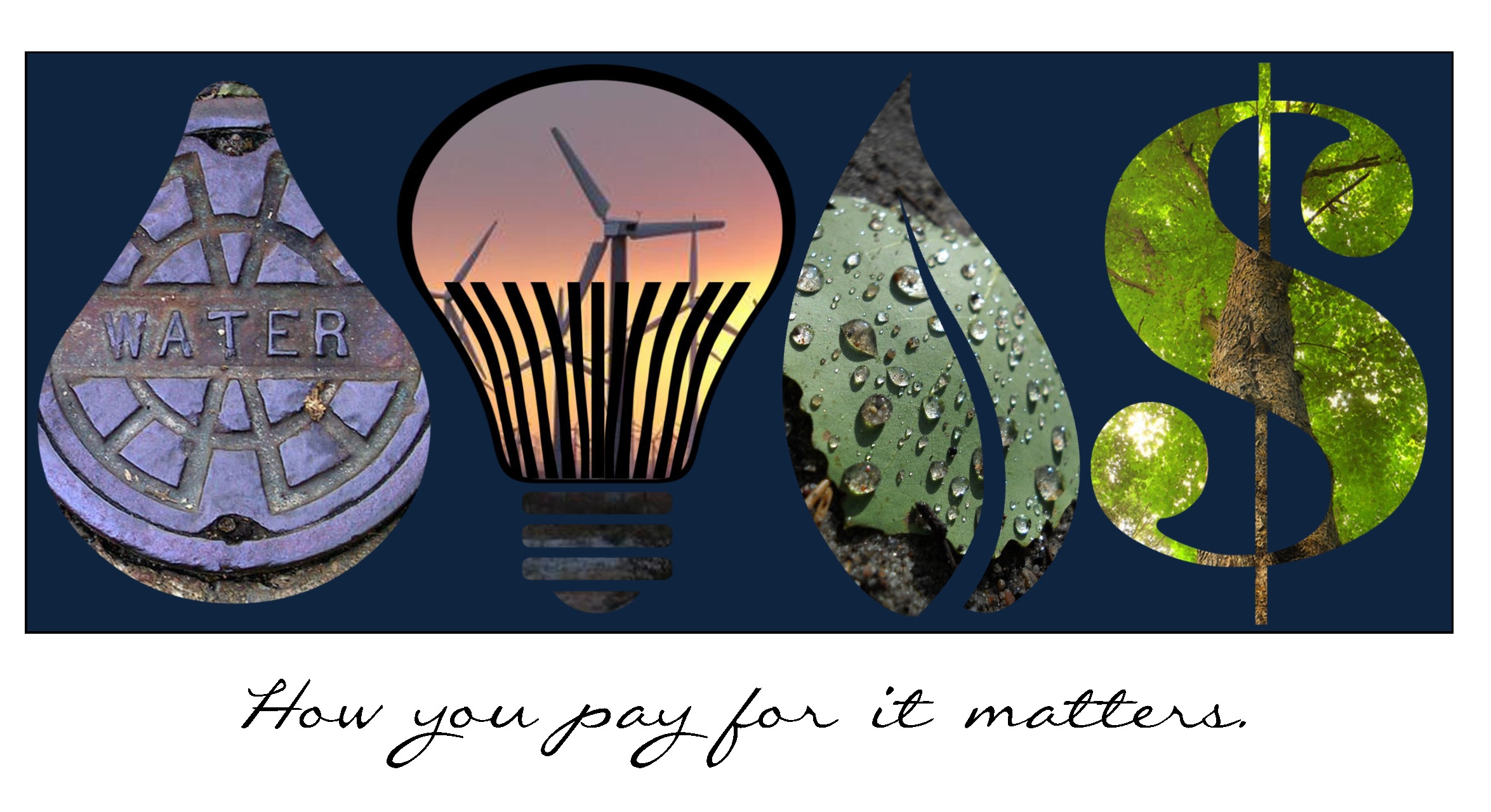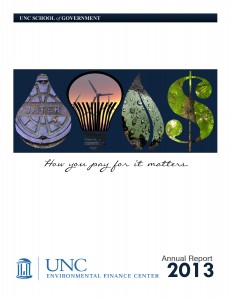Beginning around this time every year, I start to come across annual reports summarizing governmental, non-profit, and other organizations’ progress in different environmental and financial pursuits. Some annual reports are all about finance, some are more about the environment, and some, like the Environmental Finance Center’s Annual Report, integrate both.
Reading (and in the case of ours, contributing to) these documents provides a great opportunity to reflect on the current state of environmental finance. Looking at a year snapshot in time – how have environmental finance challenges changed? What are the big trends?
The secret to paying for environmental programs remains largely a secret, but the Environmental Finance Center has gained much insight over the last year.
Size Matters (Except when it Doesn’t).
The EFC provides research, advising, and educational services aimed at addressing environmental issues both large and small. Trying to figure out how to pay for a billion dollars in nutrient reduction efforts is difficult, but so is trying to figure out how to pay for a $3,000 energy efficiency retrofit for a low income family living in a rental house. What we have learned about our work is that the challenge rests not so much with the size of the problem, but with the linkages between solutions and problems. Linking resources requires understanding demand, understanding resource pools, and above all understanding partnerships…
Partnerships, partnerships, and partnerships.
Every one of our environmental projects involved some form of partnership between multiple organizations. Local governments, state governments, non-profits, for profit service providers, financial institutions, citizen groups, and universities each bring a key piece of the environmental finance puzzle. Without figuring out how to piece them together, solutions are often just out of reach. For example, we were involved in an effort that linked Raleigh water customers to source water protection 60 miles away. Between the customer (the payer) and the land preservation (part of the solution), there was a long chain of funding mechanisms, fees, agreements involving utilities, local governments, land trusts, private land owners. We were proud to play a small part in strengthening the chain.
Big Data is Alive and Well.
Many of the projects we work on focus on the complicated relationship between service pricing, customer behavior, and revenue. During the last year, we analyzed hundreds of thousands of water and energy customer environmental usage and payment data to better understand these linkages and develop reliable revenue forecasts. In another project, we were able to amass pricing and finance data from over 3,000 utilities across the country to better identify national trends.
Cashflow Rules.
Fifteen years ago when the EFC first began, we spent considerable time helping communities “chase money” in the forms of grants. Now, for a variety of reasons, we spend most of our time helping communities learn the skills for business planning and better understanding cashflows and other key financial components. Grants in most of the areas where we work have been supplanted by low interest loans that rely on financial strength rather than demonstration of financial weaknesses. This hunger for business planning cuts across all the sectors we work in. As part of EPA’s Small System Program we carried out 41 trainings in 24 states (and 4 territories) on these types of issues. On another project, we prepared a guide and carried out a series of webinars for colleges and universities engaged in energy efficiency planning.
The Future is Bright.
The degree of challenges facing some of the environmental projects we work on can be daunting, and at times I am tempted to lose hope. However, in the end I remain optimistic and upbeat that as a society we will continue to find financing solutions to daunting projects because of the commitment of our future leaders.
Being based at a university allows us to integrate students into all of our efforts. In the last year, we employed a dozen students from different disciplines from throughout campus. Our students work on our projects while taking classes, and they still find time to be active in an array of exciting student initiatives. The Environmental Engineering student supporting much of our data analysis also leads a student group working on a rural water project in Ecuador. An undergraduate Business Major working on our wetland finance project also leads the UNC Undergraduate Net Impact Club. An Environmental Sciences undergraduate student contributing to a project aimed at bolstering our state green energy program also oversees a student supported energy efficiency revolving loan fund. The skills, the experience, and above all, the enthusiasm and ingenuity our students bring to these challenge problems keeps me happily coming to work every day with a sense that the future is bright.
I encourage you to read our annual report and develop your own reflections on environmental finance through the lens of the work we do.
Jeff Hughes is the Director of the UNC Environmental Finance Center and a Faculty member at the UNC School of Government.






Leave a Reply